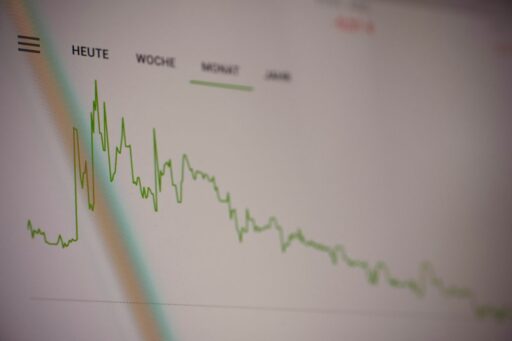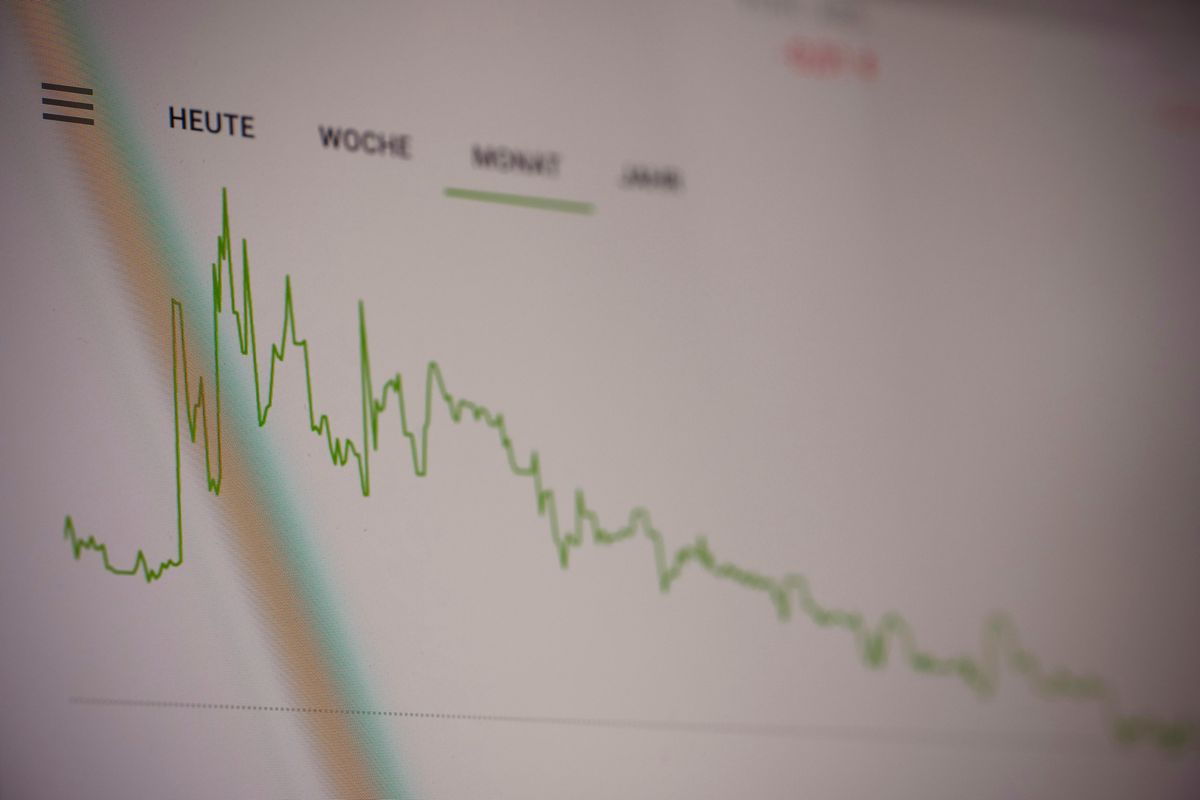The stock market is an ever-evolving entity, reflecting the dynamic interplay of economic forces, geopolitical events, and investor sentiment. Navigating this complex landscape requires a keen understanding of the current economy and the ability to adapt investment strategies accordingly. This article delves into various aspects of the stock market, offering insights and tips for unlocking wealth in today’s financial climate.
Key Takeaways
- Investors should consider shifting their focus from high-growth tech to commodities and industrials, which are poised to benefit in a deglobalizing economy.
- Embrace volatility by identifying opportunistic entry points and employing strategies that capitalize on market fluctuations while avoiding common pitfalls.
- Fixed income may play a different role in the current market, and trend-following strategies can be leveraged for positive returns amid inflation and geopolitical conflicts.
- Systematic trading offers resilience through market challenges, with a rules-based approach and options trading providing alternatives in sluggish market conditions.
- The emerging AI sector presents growth opportunities, but investors should navigate with caution, keeping an eye on historical investment trends in emerging technologies.
Adapting Investment Strategies to the New Economic Landscape

Shifting Focus from High-Growth Tech to Commodities and Industrials
In the current economic climate, investors are reevaluating their portfolios and considering a pivot away from the once-dominant tech sector. The allure of high-growth tech stocks is being tempered by a renewed interest in commodities and industrials, sectors that stand to gain from the ongoing deglobalization trend.
- Commodities trading offers stability and a hedge against inflation, with the potential for high returns.
- Industrial sectors benefit from infrastructure and development projects, often less susceptible to market whims than tech.
This shift signifies a broader change in investment philosophy, where diversification and resilience become paramount.
The trend-following strategies that once favored tech equities are finding new ground in these sectors. Investors are discovering that commodities, in particular, are well-suited to quantitative approaches. The recent performance of commodities like Orange Juice and Sugar highlights their capacity to deliver profits even when other markets falter.
Hedging Against Market Crashes with Non-Traditional Strategies
In the face of evolving market dynamics, traditional hedging strategies such as bonds are losing their luster due to a diminishing negative correlation with equities. Investors are now turning to non-traditional strategies to safeguard their portfolios against market downturns. Diversification remains a cornerstone of risk mitigation, but the approach has expanded beyond asset classes to include different financial instruments and time horizons.
Non-trend diversification strategies, such as mixing trend following with fixed-income strategies, can enhance the Sharpe ratio, thus improving risk-adjusted returns. This blend of strategies can provide smoother returns and decrease overall portfolio risk.
Investors are encouraged to embrace parameter diversification, avoiding overreliance on any single correlation that may not yield strong risk-adjusted returns under current market conditions. A long-term perspective is crucial, as short-term market movements are often driven by immediate supply and demand rather than underlying macro trends.
- Non-Trend Diversification: Combining trend following with fixed-income strategies.
- Parameter Diversification: Avoiding dependence on unreliable correlations.
- Long-Term Perspective: Focusing on enduring market trends over short-term fluctuations.
Understanding the Impact of Deglobalization on Investment Choices
As the global economic landscape shifts towards deglobalization, investors are faced with new challenges and opportunities. The rise of nationalist politics and strategic industrial policies are prompting countries like the U.S. and China to focus on domestic investments, influencing the flow of capital worldwide. Investors must adapt by considering sectors that stand to benefit from this trend, such as commodities and industrials.
The changing dynamics mean that traditional investment strategies, particularly in bonds, may no longer provide the expected hedge against stock market crashes. The correlation between bond and equity markets is weakening, necessitating innovative approaches to risk management.
In the context of deglobalization, it’s crucial for investors to reassess their portfolios and investment strategies to align with the evolving economic drivers.
Emerging markets present a varied landscape, with each country offering different levels of investment grade and financial risk. This diversity requires a nuanced approach to international investing, as the simplistic view of ‘domestic production versus outsourcing’ becomes obsolete.
Lastly, the Chinese economy’s slowdown and deleveraging in its property sector are likely to lead to a global decrease in commodity prices. This could result in fewer investment opportunities in China, further emphasizing the need for investors to explore other markets.
Embracing Volatility: How to Find Opportunistic Entry Points

Capitalizing on High Volatility with the Right Strategy
In the face of persistent high volatility, investors are tasked with identifying strategies that turn market tumult into opportunities. The key is to embrace volatility as a gateway to potential profits, rather than a deterrent to participation in the stock market.
While high volatility can be daunting, it often presents sharp market undulations that, if navigated correctly, can lead to significant gains. A systematic approach to investing during these times can help in capitalizing on these movements. For instance, structured products and options trading have gained traction among investors seeking to leverage market volatility.
It’s essential to recognize that volatility is not synonymous with risk, but rather a characteristic of the market that can be harnessed.
Here are some considerations for investors looking to capitalize on high volatility:
- Understanding the implications of inflation rates remaining above the Fed’s target.
- Recognizing the increased implied volatility due to higher volumes in the options market.
- Balancing trend and non-trend strategies to align with individual investment objectives.
As we continue to navigate through 2024, keeping a close eye on interest rate movements and their impact on various market segments will be crucial. A shift in rates can significantly alter the volatility landscape, affecting everything from index funds to FX trades and commodities.
Avoiding Common Pitfalls in a High-Volatility Environment
In the throes of a high-volatility environment, investors are often tempted by the potential for quick gains. However, this can lead to a series of common missteps that can erode capital and confidence. Avoiding these pitfalls is crucial for long-term success. Here are some key points to keep in mind:
- Not having a trading strategy: A well-defined strategy is your roadmap in turbulent markets.
- Lack of diversification: Overconcentration in a single asset or sector magnifies risk.
- Lack of discipline: Emotional trading often results in poor decision-making.
- Using margin to buy options: This can amplify losses beyond the initial investment.
- Focusing on illiquid options: These can be difficult to exit when needed.
- Failing to manage risk: Proper risk management techniques are essential.
In the face of persistent volatility, it’s imperative to maintain a disciplined approach and adhere to a strategic plan. The allure of high returns should not distract from the foundational principles of risk management and diversification.
Remember, volatility can be a double-edged sword. It offers opportunities but also presents significant risks. By being aware of these common pitfalls and having a robust strategy in place, investors can navigate the choppy waters of the stock market with greater confidence and poise.
Trend Following in the Face of Market Uncertainty
In the current economic climate, trend following stands out as a strategy that thrives on uncertainty and market fluctuations. It’s a method that doesn’t attempt to predict the future but rather adapts to the market’s movements, capitalizing on trends as they develop. This approach requires a resilient mindset, as it involves navigating through the market’s inherent volatility and the psychological challenges that come with it.
The core philosophy of trend following is to let the market’s actions guide trading decisions. This is particularly relevant today, where financial markets are unpredictable. Systematic trading rules and robust risk management are the cornerstones of this strategy, allowing investors to stay afloat and potentially leverage opportunities during unexpected market shifts.
Trend following models are ever-evolving, reflecting the dynamic nature of the markets. They are designed to be adaptable, eschewing the futile attempt to forecast the future in favor of a flexible approach that responds to market conditions as they unfold.
While trend following may not provide steady, predictable returns, it offers a way to potentially extract excess returns during specific market conditions without suffering significant losses during others. It’s a strategy that is long on macro uncertainty and correlates with macro themes, providing a liquid and less manager-specific exposure.
Fixed Income and Trend-Following in the 2024 Financial Outlook

Assessing the Role of Fixed Income in Current Market Conditions
In the current economic climate, fixed income markets have faced significant challenges, particularly due to the risks of high concentration in a single asset class. However, with the potential shift in interest rates, fixed income assets are garnering renewed attention.
Investors are now revisiting the role of bonds, especially long bonds, which traditionally have offered a hedge against stock market volatility. Despite the tumultuous performance in 2022, the outlook for 2023 and beyond suggests that fixed income could provide favorable returns, especially if interest rates remain elevated as predicted.
The landscape for fixed income investments is evolving, with a focus on the sustainability of higher yields and the strategic positioning within a diversified portfolio.
The following points highlight the current sentiment around fixed income investments:
- Sustained inflation and global recession risks may compel central banks to maintain higher interest rates, benefiting fixed income investors.
- The U.S. economy is expected to outperform other nations, making it an attractive environment for fixed income investments despite rising national debt.
Understanding these dynamics is crucial for investors looking to navigate the fixed income space effectively in 2024.
Leveraging Trend-Following Strategies for Positive Returns
Trend-following strategies offer a dynamic approach to the stock market, one that aligns with the current economic volatility. Unlike traditional investment approaches, these strategies do not attempt to predict market movements; instead, they focus on identifying and capitalizing on existing market trends. This method is grounded in algorithms and trading systems that are adept at detecting the beginnings and ends of market trends.
Trend following is not about steady, predictable returns; it’s about embracing the market’s inherent volatility and tail behavior to achieve positive outcomes.
Diversification is also a key component of successful trend-following strategies. By diversifying across various assets and incorporating non-trend strategies, such as fixed-income strategies, investors can enhance their risk-adjusted returns. This combination can lead to a more resilient investment portfolio capable of weathering market fluctuations.
The core philosophy of trend following—allowing market actions to dictate trading decisions—is especially pertinent in today’s unpredictable financial climate. It underscores the necessity of systematic trading rules and risk management, empowering investors to navigate market volatility and leverage opportunities presented by unexpected market shifts.
Framework for Navigating Inflation and Geopolitical Conflicts
In the face of geopolitical instability and persistent inflation, investors are seeking a robust framework to guide their decisions. The new global economy is marked by factors such as deglobalization and sustainability investments that may influence inflationary trends over time. Understanding these structural shifts is crucial for adapting investment strategies accordingly.
In this environment, it’s essential to consider the impact of global events on your investments. Maintaining perspective amid uncertainty can help mitigate risks associated with geopolitical conflicts and inflation.
The following points outline key considerations for investors:
- Recognizing the potential for increased volatility due to geopolitical tensions, such as the ongoing land war in Eastern Europe and tensions in the Middle East.
- Evaluating the role of fixed income in a portfolio, given its focus in the current investment climate.
- Considering the trend-following profile, which may offer positive returns despite market fluctuations and global uncertainties.
By keeping these factors in mind, investors can navigate the complexities of today’s market with greater confidence and strategic foresight.
The Resilience of Systematic Trading Through Market Challenges

The Importance of a Rules-Based Approach in Volatile Markets
In the face of unpredictable financial markets, a systematic, rules-based approach has proven to be a cornerstone of stability for investors. By adhering to a set of predefined rules, traders can navigate the tumultuous waters of the stock market with greater confidence and direction.
- Consistency in decision-making is key to success in volatile markets.
- Emotional resilience is bolstered by a rules-based strategy, preventing impulsive decisions.
- The core philosophy of trend following relies on market actions to dictate trading decisions.
In an environment where certainty is a rarity, embracing a systematic approach is not just beneficial—it’s essential.
As we reflect on the past year, the value of such an approach in managing a diversified trend-following portfolio becomes especially apparent. It’s a strategic method that not only addresses market volatility but also manages the psychological complexities of trading.
How Systematic Strategies Outperformed in a Sluggish Stock Market
In the face of a sluggish stock market throughout 2023, systematic strategies have demonstrated their resilience and capacity to outperform. Diversification has been a cornerstone, allowing traders to spread investments across various assets and time horizons, effectively mitigating risk and reducing the impact of negative market movements.
Despite the overall muted performance indicated by Trend Following Indexes, it’s crucial to recognize the spectrum of outcomes within the trend following community. The success of these strategies hinged on the chosen investment universe and the specific systems implemented. Some practitioners managed to navigate the year’s challenges more adeptly than others, underscoring the importance of a dynamic and adaptable approach.
The ideal systematic strategy evolves with the market, emphasizing parameter diversification to avoid overreliance on any particular correlation, especially if it’s not delivering a strong risk-adjusted return with recent market data.
A long-term perspective remains vital, as short-term market movements are often more reflective of immediate supply and demand rather than underlying macro trends. This approach has allowed systematic traders to maintain a steady course through the unpredictable currents of 2023’s stock market.
Options Trading: A Viable Alternative in Stagnant Market Conditions
In periods where the stock market shows little to no growth, options trading emerges as a compelling alternative for investors seeking to maintain an active trading strategy. Options provide the flexibility to profit even when traditional assets are underperforming, offering a dynamic toolset for those willing to navigate the complexities of derivatives.
Options trading is particularly attractive due to the potential for high returns in a short time frame. For instance, a successful options trade can yield significant gains that might otherwise take months to achieve through conventional stock investments. This is especially relevant in light of recent market performances, which have been lackluster compared to the robust growth seen in previous years.
Experts recommend a careful blend of trend and non-trend strategies to diversify an investor’s approach. This diversification is crucial in managing the inherent risks of options trading, where higher volumes can lead to increased implied volatility. Moreover, the rise of 0DTE options trading has introduced new dynamics, with tight spreads and the possibility for substantial profits if market movements are accurately anticipated.
While the stock market may be experiencing a slowdown, the options market is buzzing with activity. The acceleration of options trading volumes, particularly in 0DTE contracts, highlights the market’s adaptability and the opportunities available for savvy traders.
Ultimately, the key to success in options trading during stagnant market conditions lies in the strategic selection of contracts and timing. Investors who master these elements can unlock new avenues for wealth generation, even when traditional markets are struggling.
Identifying Growth Opportunities in the Emerging AI Sector

Navigating the Potential AI Stock Rally with Caution
As the AI sector experiences a surge in investor interest, caution is paramount. Not all AI stocks will be winners, and the sector’s volatility can be as rapid as its growth. It’s essential to differentiate between companies with solid fundamentals and those riding the hype wave.
While the temptation to jump on the bandwagon can be strong, investors should conduct thorough due diligence and not be swayed by the fear of missing out.
Here are some key considerations when evaluating AI stocks:
- Look for companies with a clear competitive edge in technology.
- Assess the scalability of the business model.
- Examine the track record of the management team.
- Be wary of overvaluation due to speculative trading.
Remember, investing in AI is not about catching the latest trend, but about understanding the long-term potential and the risks involved.
Top AI Stocks to Consider for Your Portfolio
As the Nasdaq jumped 43% in 2023, largely propelled by the burgeoning AI sector, investors are keenly looking for the top AI stocks to buy. Companies that are leading the charge in AI technology range from chipmakers to software giants and cloud service providers, each battling for an edge in this rapidly evolving market.
When considering AI stocks, it’s essential to look at companies with robust AI-driven growth. Microsoft, for instance, has seen significant benefits from its AI initiatives, with AI contributing to six additional percentage points of growth. Their diverse AI applications, from Azure to GitHub, position them as a strong contender in the AI space.
Another company to watch is Super Micro Computer (NASDAQ: SMCI), which has experienced a revenue surge of 103% due to high demand for its AI server and storage equipment. Despite being supply constrained, the potential for growth remains substantial.
While it’s tempting to rush into the AI rally, prudent investors should consider the long-term viability and market position of these companies before making investment decisions.
Lastly, Nvidia continues to be a frontrunner, with its stock maintaining a remarkable growth trajectory. As AI technologies become more integrated into various industries, these companies are well-positioned to capitalize on the trend.
Learning from Historical Investment Trends in Emerging Technologies
Historical investment trends in emerging technologies offer invaluable lessons for navigating the potential AI stock rally. Investors who study past tech trends can anticipate shifts and position their portfolios to capitalize on new opportunities. For instance, the transition from high-growth tech to commodities and industrials, as seen during periods of deglobalization, underscores the importance of adaptability in investment strategies.
Emerging trends, such as those observed in December 2023, indicate a regime shift that may favor trend followers. The subdued performance across the trend following community suggests that new trends are taking shape, and those who align their strategies accordingly could see a promising start to 2024.
It’s crucial to recognize the lag in trend following models as they adjust to emerging trends. The persistence of these trends could be a harbinger of success for investors who are prepared.
When considering AI stocks, it’s essential to look at the top five technology investment trends to watch in 2024: Artificial intelligence, cloud computing, cybersecurity, and robotics. These areas are likely to drive the next wave of innovation and growth in the stock market.
Conclusion
As we navigate the complexities of the current stock market, it’s clear that traditional strategies may no longer suffice. The year 2023 has taught us the importance of adaptability and the need for a systematic, rules-based approach to investing. With a focus on commodities, industrial sectors, and trend-following strategies, investors can unlock wealth even in times of high volatility and geopolitical uncertainty. It’s crucial to remain opportunistic, yet disciplined, as we face a market that is rapidly evolving due to structural inflation and shifting global dynamics. As we look ahead, let’s carry forward the lessons learned and the strategies discussed to continue thriving in the stock market of tomorrow.
Frequently Asked Questions
How is the economic shift affecting investment strategies?
Investors are moving away from high-growth tech stocks and looking more towards commodities and industrial sectors that benefit from deglobalization. Additionally, traditional hedging strategies like bonds are less effective as the bond and equity markets are losing their negative correlation.
What does ‘opportunistic entry point’ mean in trend following?
An opportunistic entry point refers to the precise moment when a trader capitalizes on market volatility to enter into a position that is expected to be profitable, by following the market trend.
What are the key themes to watch in the 2024 investment strategy?
Key themes include navigating inflation, monetary policy shifts, geopolitical instability, and leveraging trend-following strategies to avoid common pitfalls in a high-volatility environment.
How did systematic trading strategies perform in the early 2024 market conditions?
Systematic trading strategies have outperformed, particularly in January and early February 2024, as they capitalized on powerful market trends across commodities, cryptocurrencies, and equities.
What is a framework for understanding the impact of global trends on investments?
The framework involves assessing how inflation, geopolitical conflicts, and market volatility may affect investment strategies, and adjusting trend-following approaches to align with these global trends.
Why are options trading considered viable in stagnant market conditions?
Options trading offers more profit opportunities in a sluggish stock market, as it can yield significant returns in a short time compared to the potential long wait for stock market gains.





